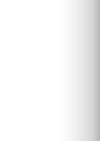


Hosseini A, Nafisi Bahabadi M, Sotoudeh E, Hemmat Y, Ghorbani Vaghei R. Feeding factors, growth and chemical composition of whiteleg shrimp (Litopenaeus vannamei) fed diets containing different binders. JFST 2017; 5 (4) :57-70
URL:
http://jfst.modares.ac.ir/article-6-8528-en.html
Abstract: (7872 Views)
This experiment was conducted to determine the effects of three binding agents, including corn starch, carboxymethyl cellulose (CMC) and urea formaldehyde (UFA) (in diets containing 42% soybean meal) on growth performance, pellet water stability and chemical composition of Litopenaeus vannamei. Shrimps with an average initial weight of 0.73 g stored in polyethylene tanks and fed experimental diets for 52 days (four treatments and three replicates). Biometric measurements of shrimp were carried out in two periods of 15 and 21 days. At the end of experiment results showed that the average final weight of shrimp fed the UFA binder is significantly lower than other treatments (p<0.05). Specific growth rate at three sampling periods (p<0.05) and at the end of experimental (p<0.01) was significantly affected by the type of binder, with the lowest SGR in UFA and highest in shrimps were fed control diet. Statistical analysis showed that chemical body composition of shrimp was not significantly affected by dietary treatments. In general, according to the results of diet stability, growth performance and feed utilization as well as shrimp body composition, corn starch is a good binder for whiteleg shrimp feed.
Received: 2015/11/8 | Published: 2017/02/19

















































